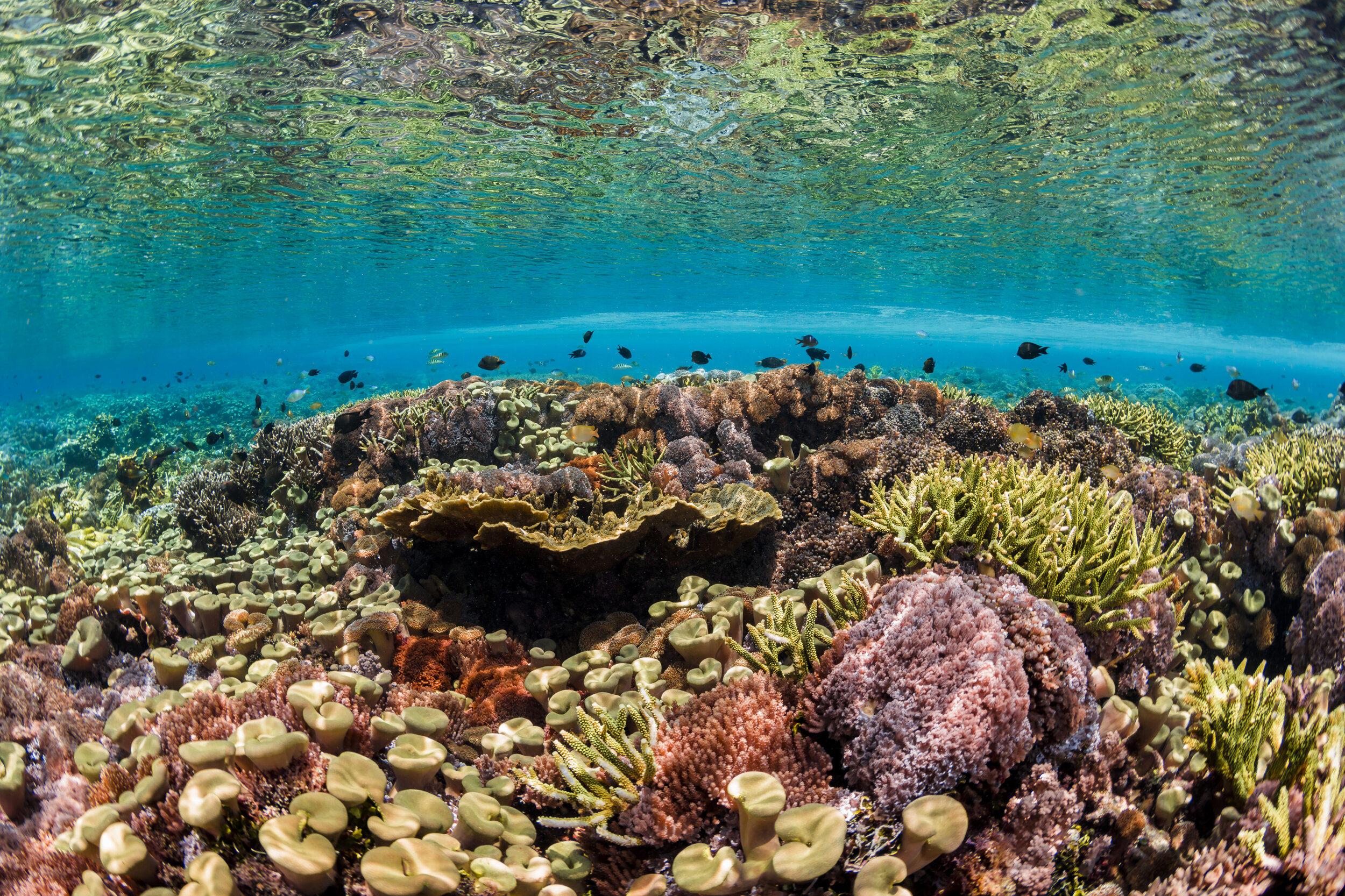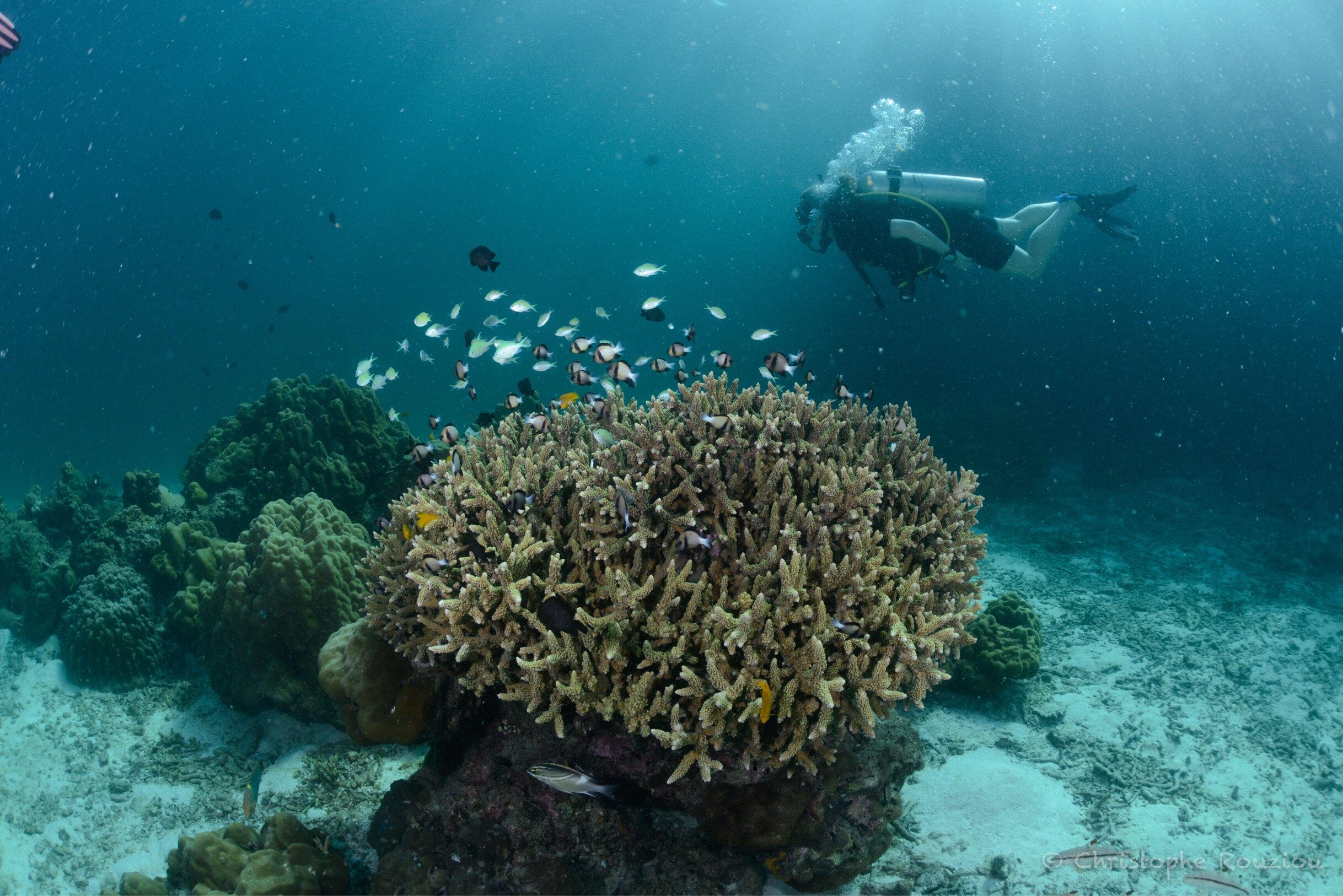Samantha Craven’s PADI Torchbearer Interview
We were delighted that our Programmes Manager, Sam, recently had the opportunity to be interviewed by PADI’s Corporate Social Responsibility Specialist Emma Daffurn for its Torchbearer group on Facebook. It was such an insightful discussion we wanted to share it with our network too. So without further ado, brew a cuppa and enjoy some of the highlights!
Here we are for another Torchbearer Q&A with Reef-World’s Sam Craven. Put simply, Green Fins – Reef-World’s flagship programme – is a management program aimed primarily at tropical climates that supports the diving and snorkelling industry in becoming more sustainable. AND, they're one of PADI’s primary partners in marine conservation...There's something for everyone to get involved with - whether you're a dive center owner, professional or recreational diver.
To start with, Sam could you introduce yourself and let us know how you came to work with Reef-World?
My name is Sam Craven and I'm the Programmes Manager of The Reef-World Foundation. A UK charity, we're the international coordinator of a programme called Green Fins which we run in partnership with the UN Environment Programme. My background is marine biology so I was trained as a scientist but I always found myself wanting to do something more with the knowledge. I started out in environmental education in Singapore doing field trips teaching kids about the environment and I found myself wanting to do more. I found a volunteering programme called Zoox which taught you the skills you need for conservation but also put those skills into action by volunteering for Green Fins in the Philippines. Off the back of that, I started working for The Reef-World Foundation in around 2012 and am still here!
That's such a nice story! You’ve given us a little intro to what Green Fins is there but what is the aim of Reef-World’s Green Fins programme?
Green Fins was formulated because UNEP recognised there were no environmental standards for diving in the way safety is so habitual. When it comes to the environmental impacts of diving, there wasn't any guidance or any standard about the appropriate way to be diving so we can continue to enjoy coral reefs. The programme was started in 2004 as a code of conduct with 15 points for actions above and below the water. It wasn’t just aimed at the divers themselves but also for businesses to consider how you are interacting with your business asset. Of course, this is your staff and the services you provide but also the natural environment people are coming to see. It's evolved a long way from there to a whole system that helps people implement that code of conduct. We've developed a suite of tools, posters and solutions all to try and drive higher compliance to these standards.
What it revolves around is how do we harness the power of the diving industry to be a force for good, even if you're just a recreational diver and you're not using it for a specific conservation purpose. When people are more engaged in coral reef protection, because they've been able to see it first hand, they go and fall in love with all the other ecosystems that you can dive in. So, it's an incredibly powerful tool but it does have impacts. I think there are about 20 million certified scuba divers out there with 1 million new divers certified each year. Looking at the collective industry, we want to see how we can do even better to work with nature instead of against it. That’s the ethos at the heart of what Green Fins is trying to do.
I think a lot of people assume Green Fins is an organisation but it's an initiative that gets adopted by different governments around the world. It’s used as one of their tools to work with the private sector to protect reefs. Reef-World helps train those governments and give them support to implement the programme and make sure there are positive relationships with their diving industry so they can collaborate.
Where is Green Fins currently active?
The Code of Conduct was put out in 2004 and Reef-World first got involved in about 2008. That's when we started to develop the training programme and started to flesh out the materials to support people implementing the code of conduct in a way that can be replicated in different countries. So, Thailand, the Philippines were first. Then came Malaysia and Indonesia. A geographical priority was, of course, the Coral Triangle, as it’s a hotspot for diving and reef diversity. It then spread to the Maldives, Palau, Egypt, Dominican Republic, Antigua and Barbuda. The Malaysia team also works with some dive centres in Singapore. We are paused on trying to introduce it into Timor Leste, Japan and Guam in the future. That was supposed to happen this year but we'll see when we can travel again.
What’s covered in the Dive Guide e-Course?
The Dive Guide e-Course is all about how to be the best role model, environmentally, and what are the strategies people have found effective in managing their guests. So, one of the concerning things about diving impact on reefs is whether we touch coral because coral is a very fragile, breakable animal. That could be fins (actually, it's mostly fins), dangling equipment or holding on to look at something. In terrible cases, we've seen examples of people harassing or manipulating marine life. We know an environmental briefing is important. So, giving reminders of why it's important not to touch the reef, to watch your fins, to dive in trim, to have good buoyancy etc. That in the pre-dive briefing, coupled with correction underwater (which doesn't have to be “you are doing it wrong!” - it could just be helping someone put their fins up a little bit), can reduce the number of contacts a diver makes by 30%. Dive and snorkel guides have this essential role to play when it comes to managing direct impacts on the reef. How do we empower them to do it the best they can? Hopefully, all that information is in the Dive Guide e-Course.
What about if you're a recreational diver just diving a couple of times a year but you love reefs and you want to make sure that you're not harming them. What resources are available?
I think the number one thing is that you have Green Fins members to choose from. Those are the operators actively working on improving their environmental standards. If you want the best of the best, those are those top lists in the country and you can find those on the Green Fins website.
When I was doing the Dive Guide e-Course, it made an interesting point about not taking stuff from the ocean. Can you talk a little bit more about that?
We all know not to take stuff from the ocean, right? But then, at the same time, maybe we have a lot of shells and in this way we are unknowingly promoting this culture without even thinking about it. Think about wearing shells. I had a lot of shells when I wanted to be a marine biologist. It’s a way to show people who you are.
But this changes as we understand the scale of the industry and how many shells are collected. You might think: one piece of coral, what difference is that gonna make? But that one coral has come through an industry where millions are collected over the course of a year. It’s not only concerning because almost everything you see on a reef is an animal and they all have a role to play in maintaining a balanced and robust ecosystem. Also their shells are calcium carbonate that will eventually degrade into the seawater and other cell based organisms or corals need that replenishment. They need that supply and we keep taking it out.
Climate change is causing ocean acidification which is actually eroding the coral skeleton so it’s even more important that they have the resources to build them back up again.
What can divers do to tackle climate change?
As divers, it might seem we can't do a lot (other than fly less) to tackle climate change. It could seem like this insanely big issue and it’s hard for people to know how do you even make a difference?
Scientists are learning that, with reefs, their resilience is key to their survival. The resilience we're talking about is being able to recover from stress. Stress like acidifying waters or warming waters. So, when a coral bleaches, it doesn't die immediately. But if the heat continues, it will eventually. But while it's in this interim period where it could recover, its best chance of recovery is if the rest of it is as healthy as possible. That's where Green Fins, and our individual actions as divers, can make a big difference. This is because we're removing one of the obstacles that corals have to fight to survive. Like I said, it's not just one of us, it's 20 million of us. Think about 20 million fin kicks on one piece of coral!
And if you're feeling like it's just too much and the world is falling apart (I think, especially this year, I've definitely had those moments!). Remember it’s not just what I'm doing, it's collectively as divers who love the ocean, what standards can we all follow to make sure we can dive in 20 or 30 years’ time?
How can the Green Fins principles support other ecosystems?
Seagrass, mangroves and coral reefs, as three ecosystems, are the trifecta for health. They are more resilient when there are three or just two of them together rather than any one of them on their own. People come across this sometimes and it's like in a textbook when you see a mangrove and then there's a seagrass and then there's the reef. The first time I saw that was maybe in Palau. That was amazing.
But you don't often and it could be that the mangrove is where the boats get docked in the storm and around the headland is the seagrass. But they're all connected by the animals that live in and move between them. If you're diving in seagrass (which is amazing), it’s the same Green Fins principles that you need to follow because they're a very fragile ecosystem as well.
Can you give us an overview of the standards divers should follow?
A lot of them are stuff that people will already know like respect marine life, shoot photos without disturbing them or the environment and try to keep a distance. Don’t touch anything: only touch rock or dead coral if absolutely necessary.
If you’re not in an emergency, you don’t need to hold on. You can work on your trim, you can work on your buoyancy. We recommend frog kicks over other types of finning techniques because it minimises the chances of contact with the reef as well as backwash from your fins which can also have an impact. And then, of course, reducing stirring the sediment. When you stir the sediment, it's not just reducing visibility. If it lands on coral, it can smother them because they need sunlight to survive. And don't litter, of course.
Green Fins recommends against gloves when diving in tropical climates. Can you explain why?
if you're diving in tropical waters, it's very unlikely you're going to need to wear gloves because of the temperature. So, people are wearing them for protection or maybe they have reactions to something in the water. But gloves do also give you a false sense of security so you probably wouldn't think as heavily about touching something if you're wearing gloves. That's the idea behind: that you're putting in another step before you take an unintended action. Of course, we’re talking about tropical diving here. If diving in cold water, I would be wearing gloves!




